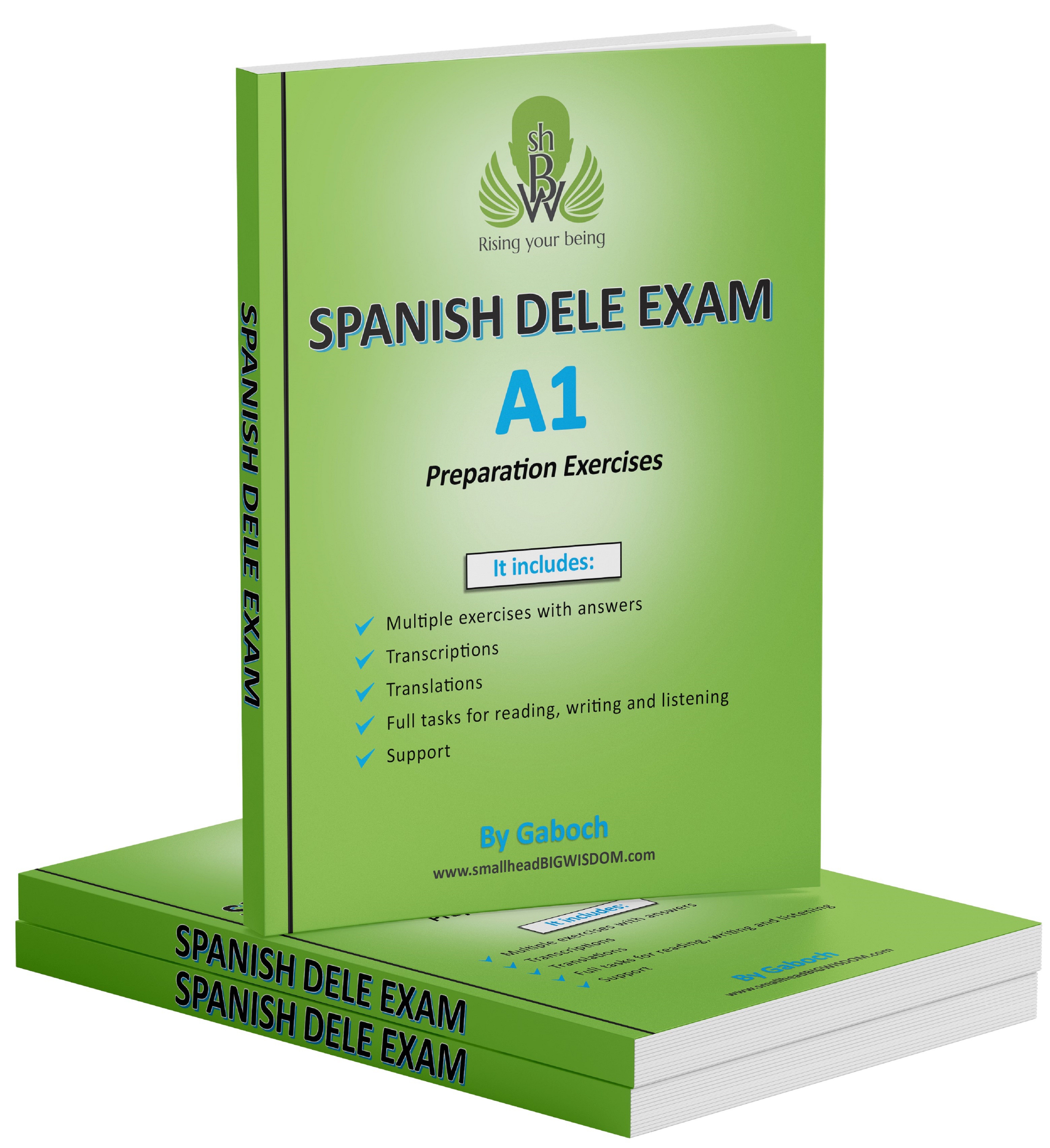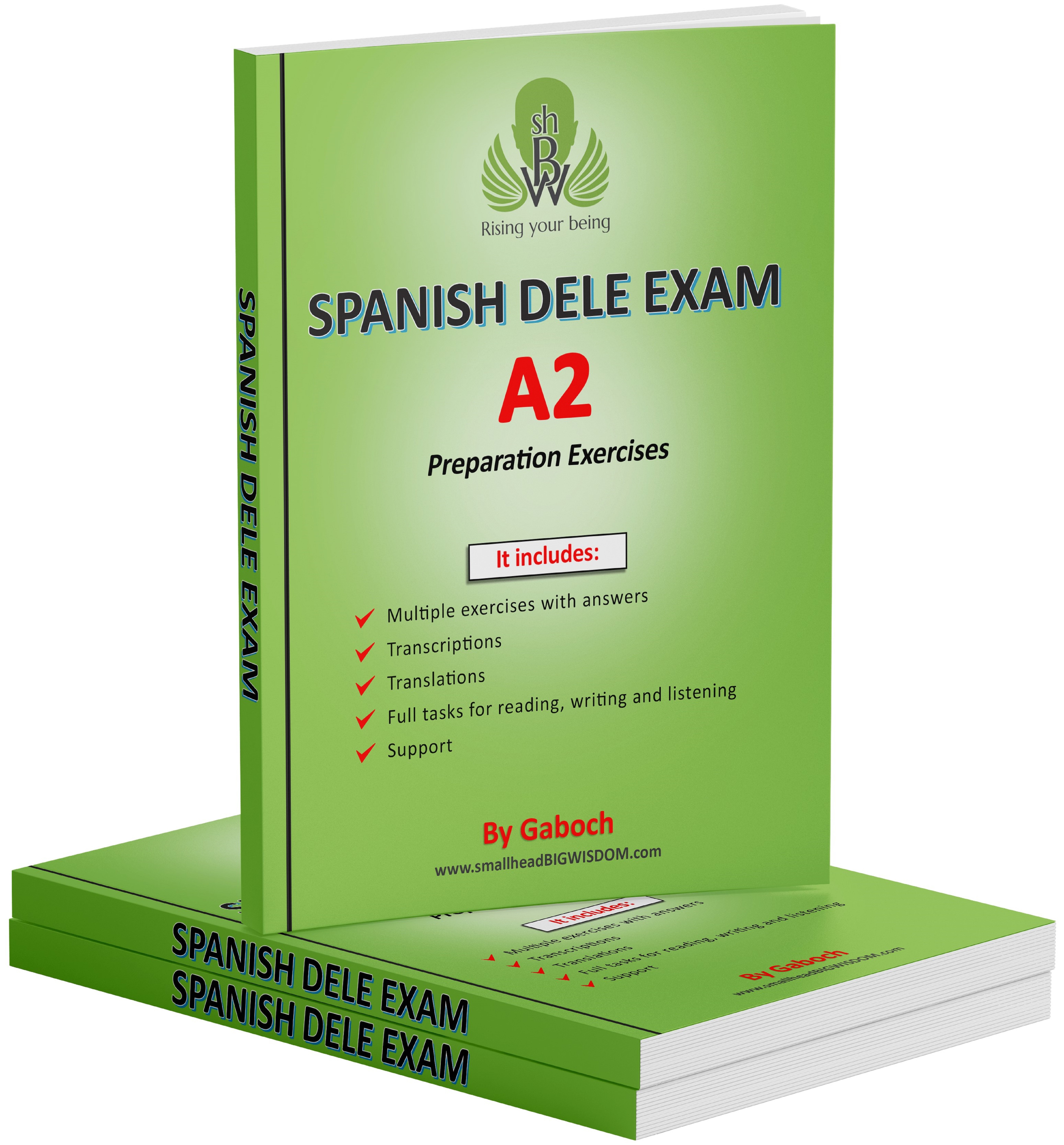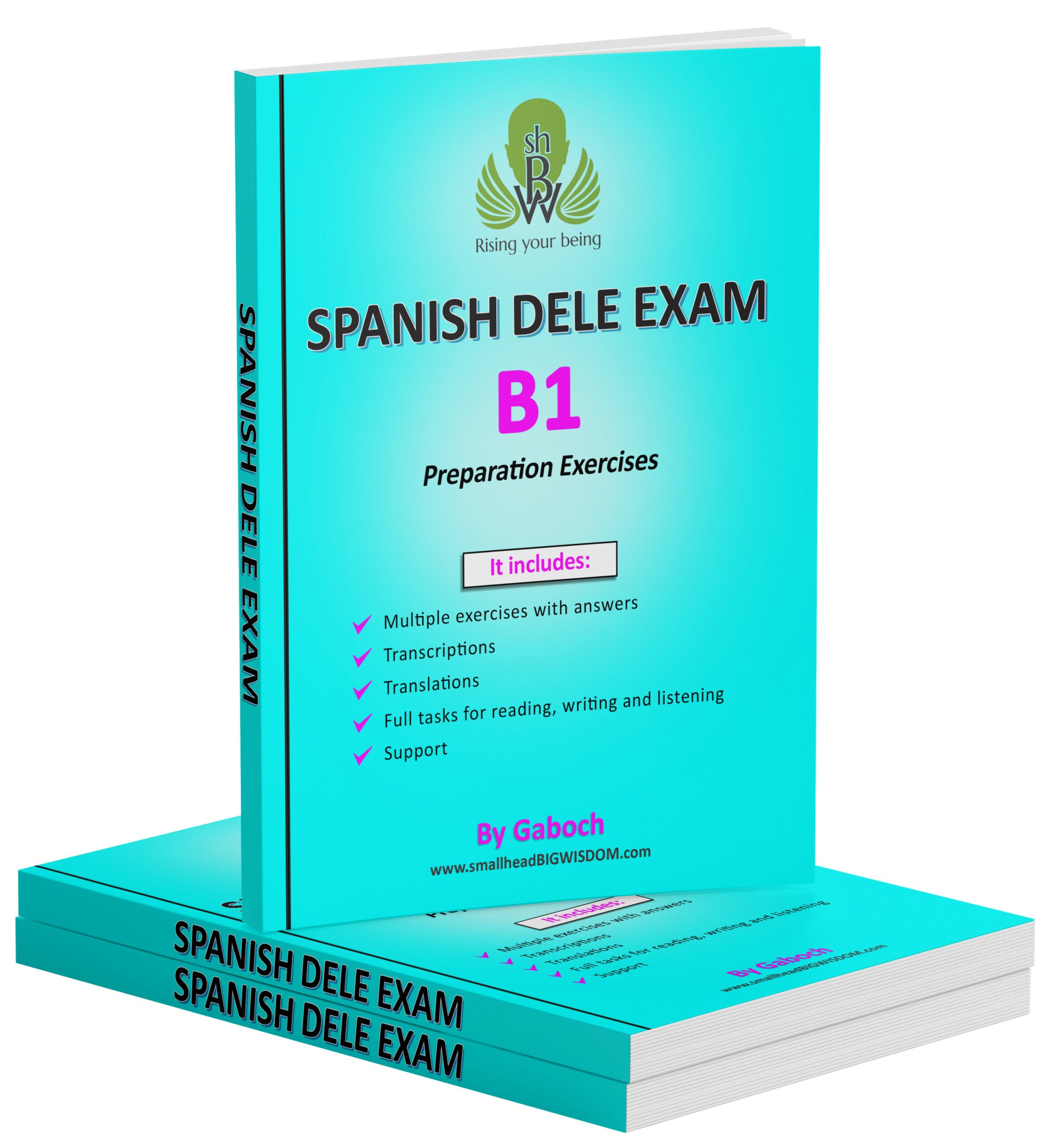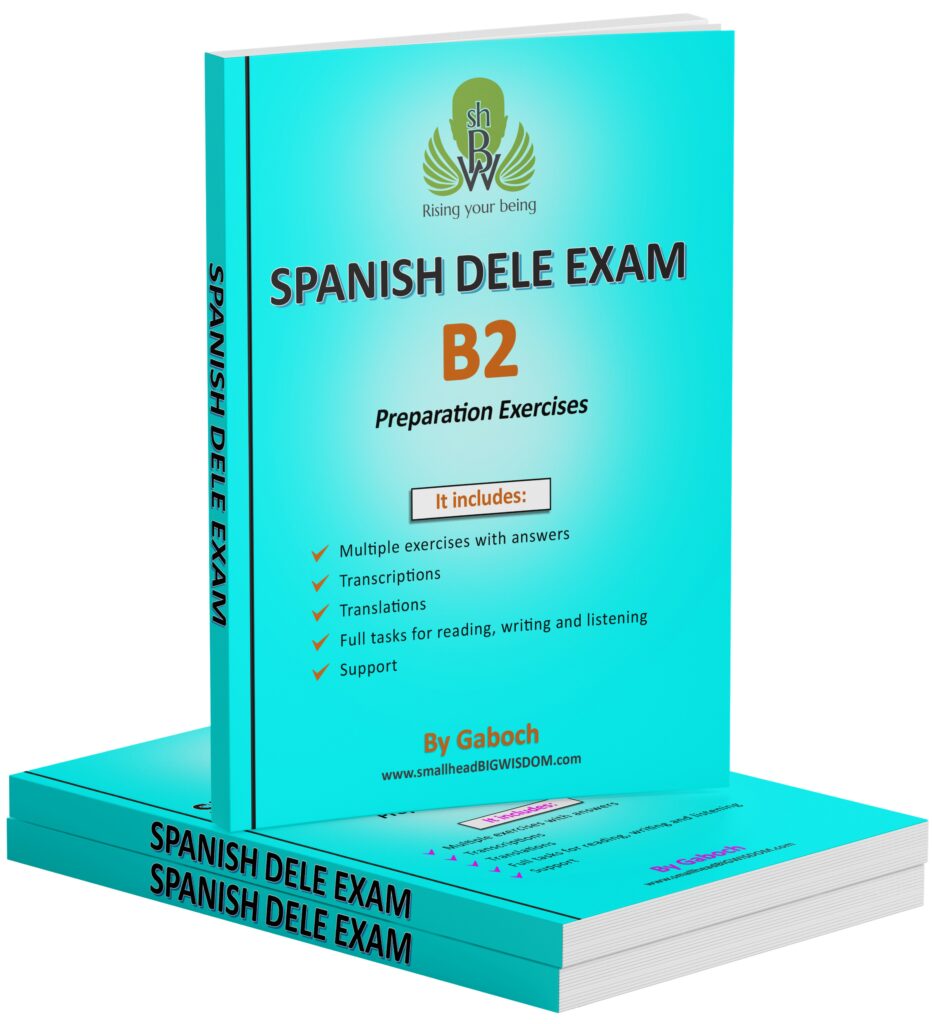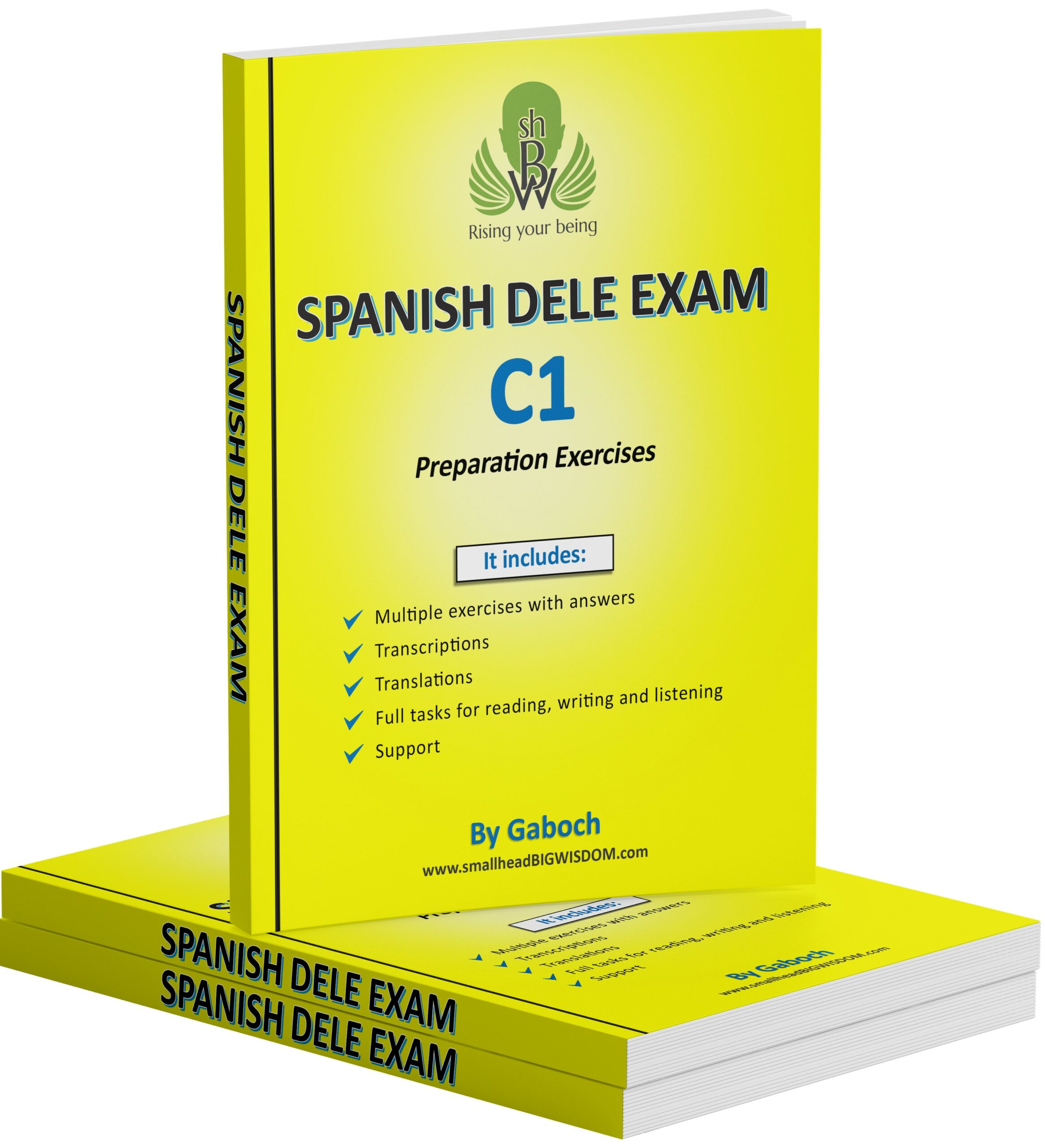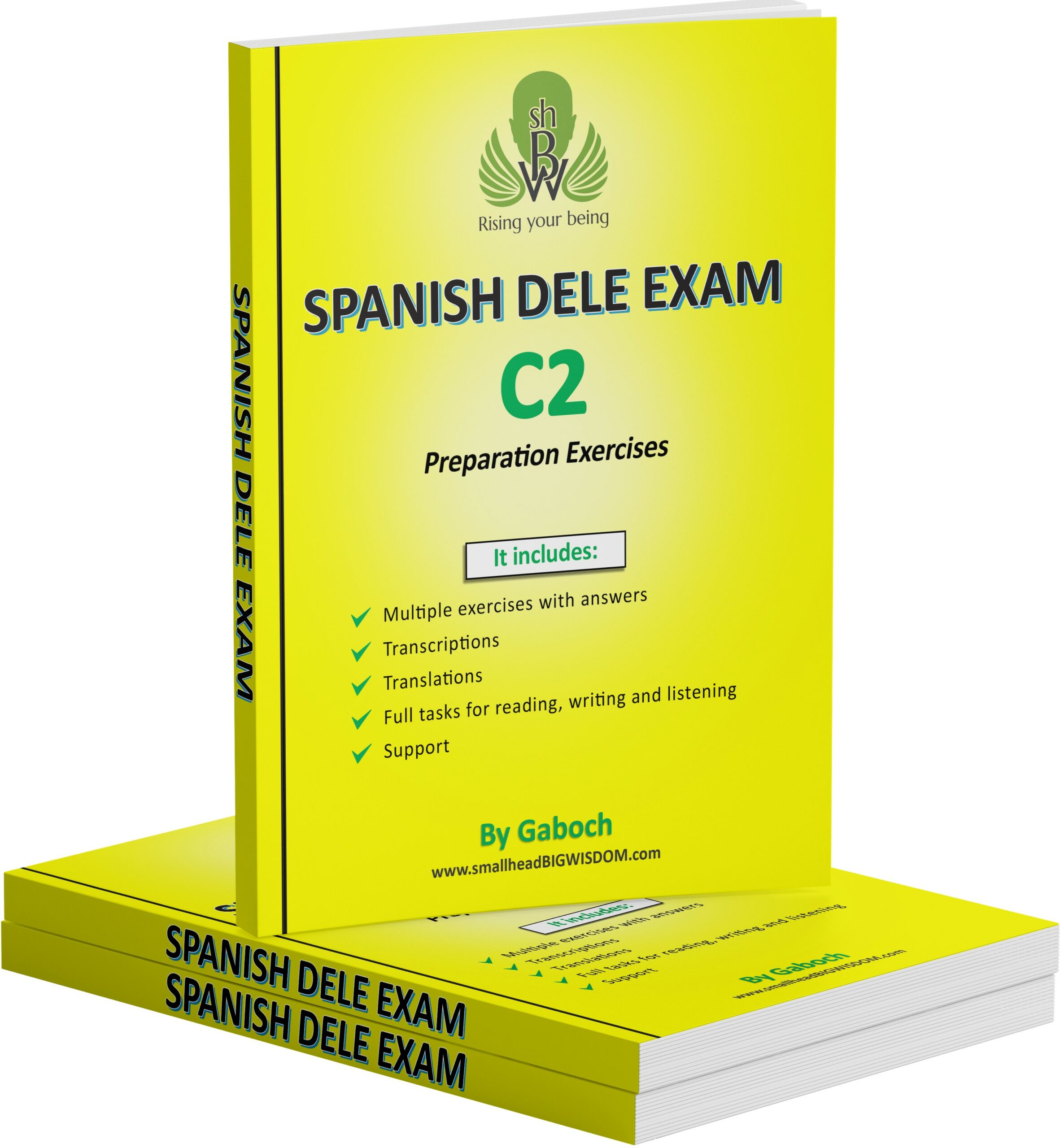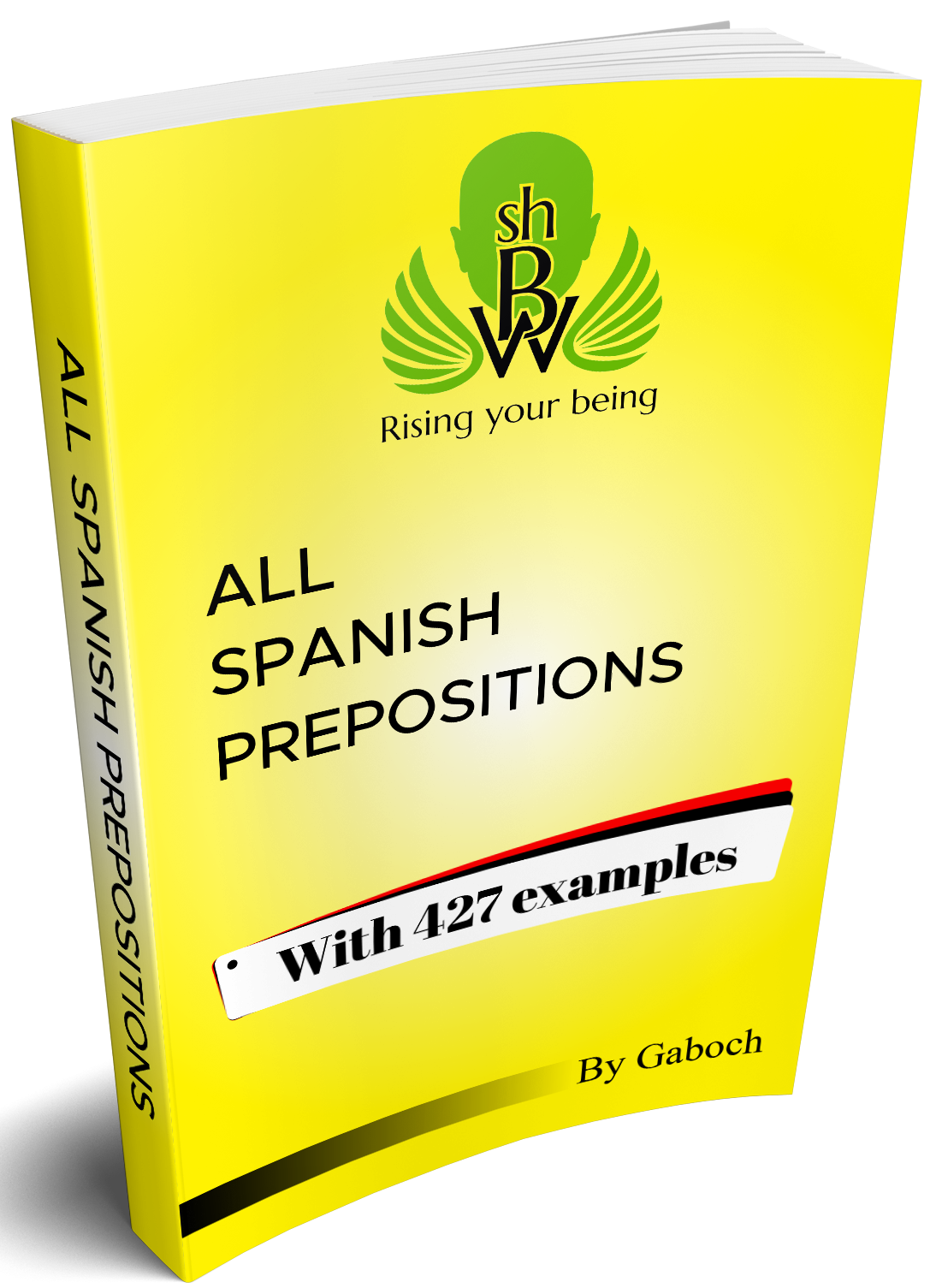smallhead BIGWISDOM
Rising your being
Exercises with Direct Object Pronouns (DOP)
The Direct Object Pronouns
The direct object is which directly receives the action of the verb. A golden rule is to rewrite the sentence in passive voice.
The direct object pronouns in Spanish are:
- me (me)
- te (you – informal)
- lo (him, it – masculine, or you – formal masculine)
- la (her, it – feminine, or you – formal feminine)
- nos (us)
- os (you all – informal mainly in Spain)
- los (them – masculine, or you all – formal masculine)
- las (them – feminine, or you all – formal feminine)
Example1:
Pedro golpeó la bola (Peter hit the ball).
La bola fue golpeada por Pedro o ¿Pedro golpeó qué? (The ball was hit by Peter or Peter hit what?
La bola (Direct object)
Pedro la golpeó.
Example2:
Amanda golpeó a Pedro (Amanda hit Peter).
Pedro fue golpeado por Amanda o ¿Amanda golpeó a quién? (Peter was hit by Amanda or Amanda hit whom?
Pedro (Direct object)
Amanda lo golpeó.
Other examples:
Note: When there are 2 verbs, the direct object pronoun is placed either before the first verb or appended to the second verb.
1. Paul compra las flores = Paul las compra. (Paul buys the flowers = Paul buys them.)
2. Tengo el bolígrafo = Lo tengo. (I have the pen = I have it.)
3. Juan quiere vender la casa = Juan la quiere vender o Juan quiere venderla. (Juan wants to sell the house = Juan wants to sell it.)
4. La chica lee los periódicos = La chica los lee. (The girl reads the newspapers = The girl reads them.)
5. Ella conoce a ti = Ella te conoce. (She knows you.)
6. Ella quiere comprar un carro = Ella lo quiere comprar o Ella quiere comprarlo. (She wants to buy a car = She wants to buy it.)
7. El profesor explica el tema = El profesor lo explica. (The professor explains the topic = The professor explains it.)
8. Ella siempre estudia las materias difíciles = Ella siempre las estudia. (She always studies the difficult subjects = She always studies them.)
9. Jorge no compra la ropa = Jorge no la compra. (Jorge doesn’t buy the clothes = Jorge doesn’t buy them.)
10. Quiero ver el espectáculo = Lo quiero ver o quiero verlo. (I want to see the show = I want to see it.)
11. Usted necesita comer verduras = Usted las necesita comer o Usted necesita comerlas. (You need to eat vegetables = You need to eat them.)
12. María debe visitar a sus padres = María debe visitarlos o María los debe visitar. (María should visit her parents = María should visit them or María should visit them.)
13. Ana debe alimentar las mascotas = Ana las debe alimentar o Ana debe alimentarlas. (Ana should feed the pets = Ana should feed them or Ana should feed them.)
14. Marta habla español bien = Marta lo habla bien. (Marta speaks Spanish well = Marta speaks it well.)
15. Usted debe comprar la camisa = Usted la debe comprar o Usted debe comprarla. (You should buy the shirt = You should buy it.)
16. Ella vende pescados = Ella los vende. (She sells fish = She sells them.)
17. Quiero ver el menú = Lo quiero ver o quiero verlo. (I want to see the menu = I want to see it.)
18. La chica necesita estudiar la lección = La chica la necesita estudiar o La chica necesita estudiarla. (The girl needs to study the lesson = The girl needs to study it.)
19. Muchas personas hablan los idiomas inglés y español = Muchas personas los hablan. (Many people speak English and Spanish = Many people speak them.)
20. Los jefes aumentan los salarios cada mes = Los jefes los aumentan cada mes. (The bosses raise the salaries every month = The bosses raise them every month.)
Get the book about 1100 English-Spanish Cognates!
Bonus: Audio pronunciations
Get it now!
(See Table of Content)
